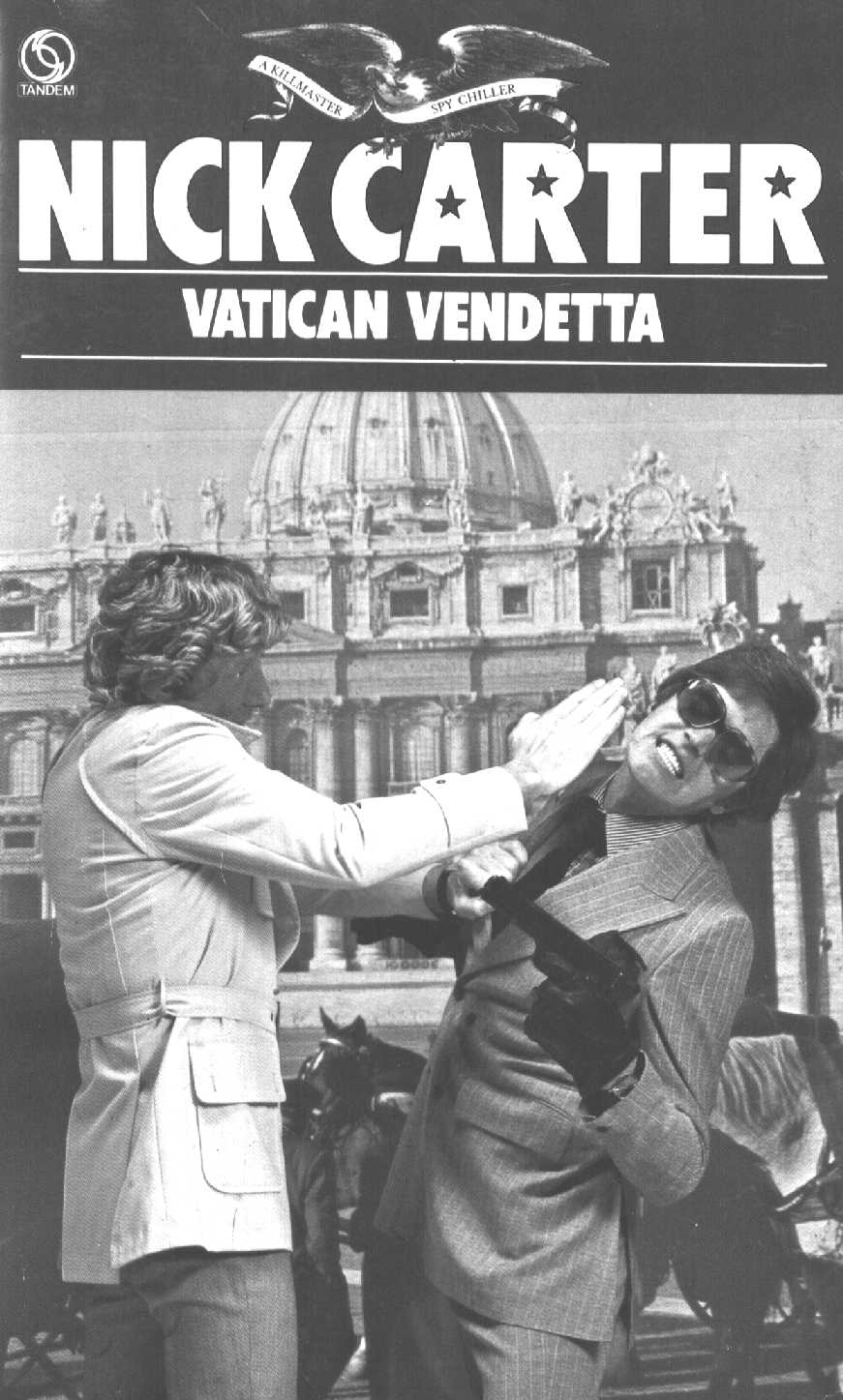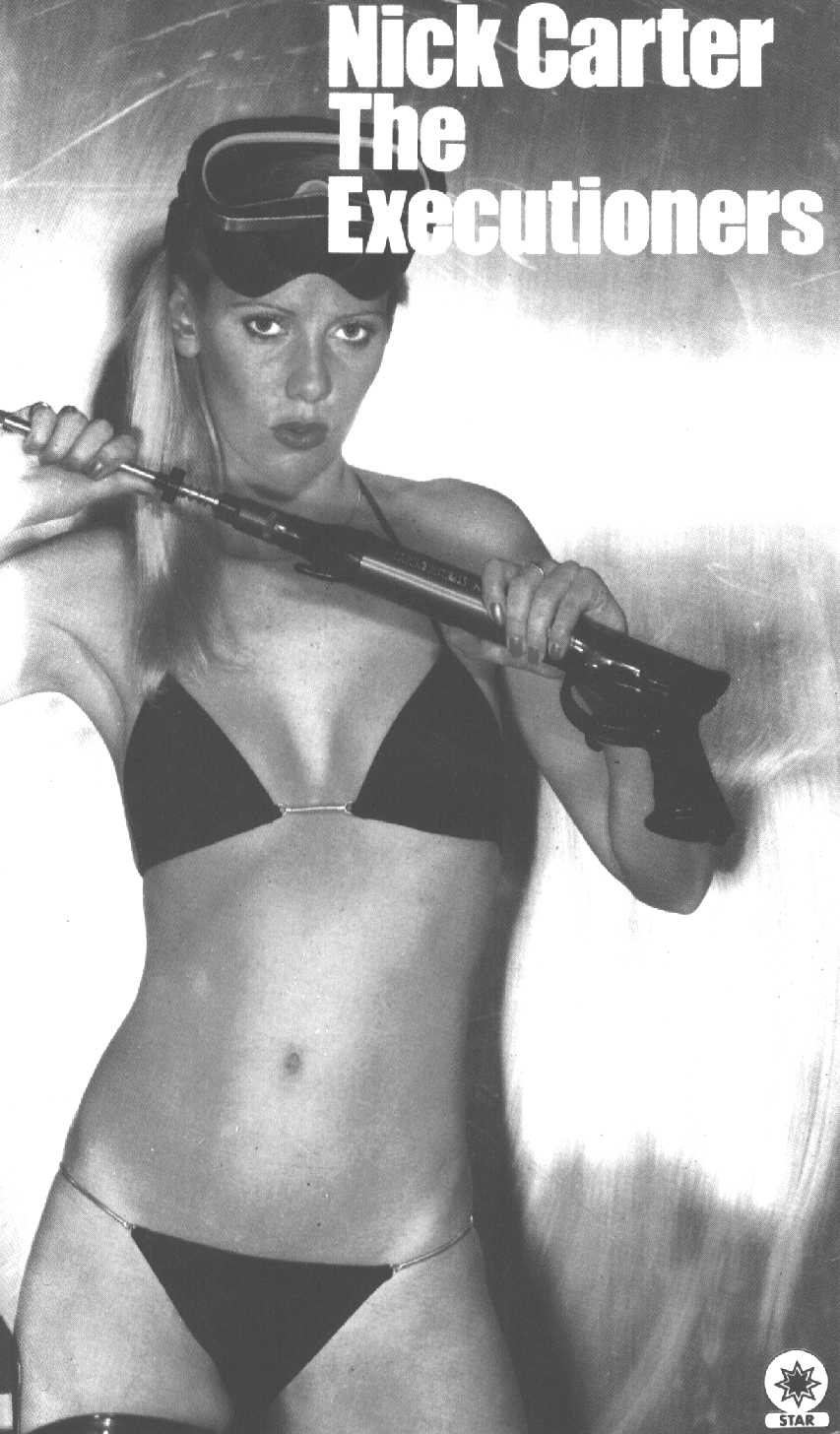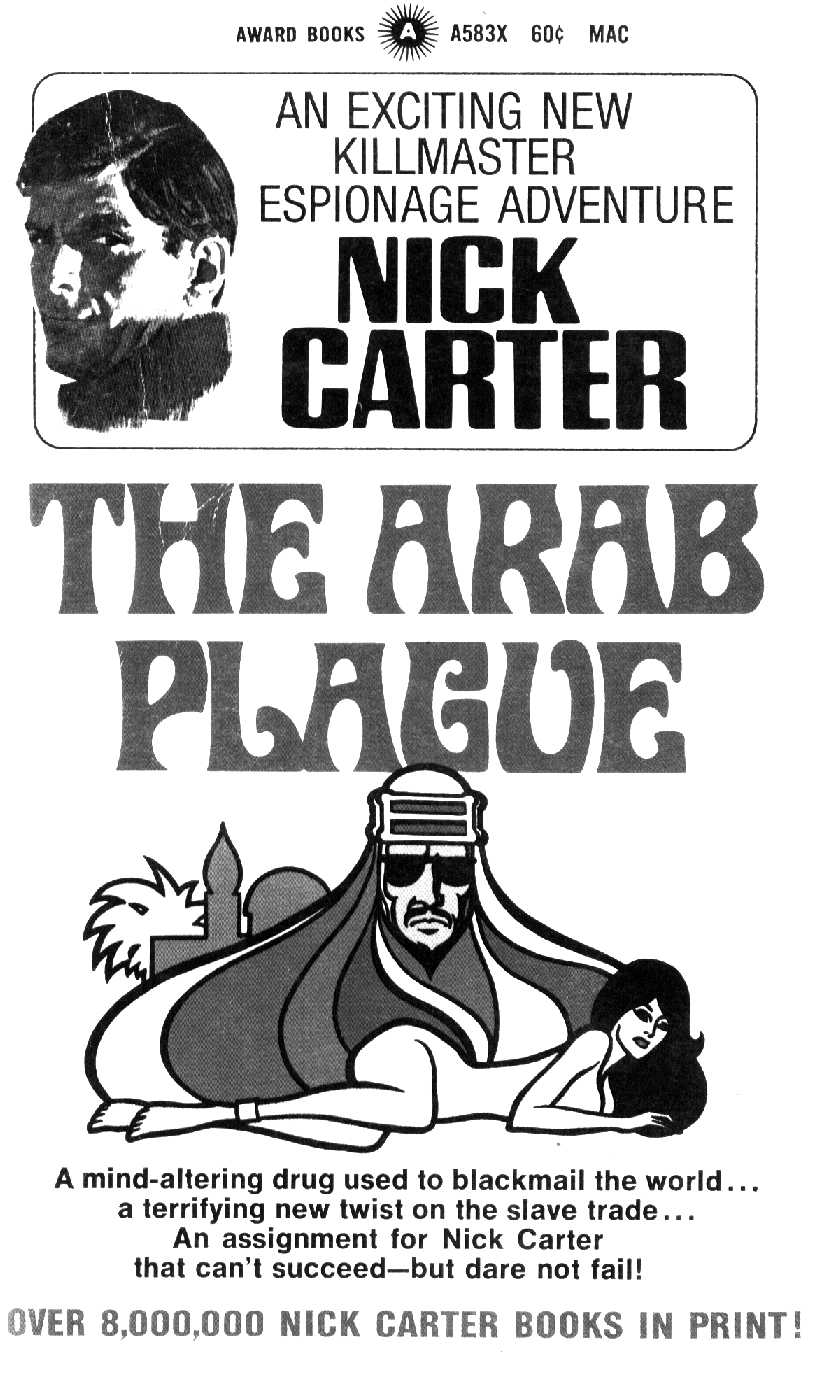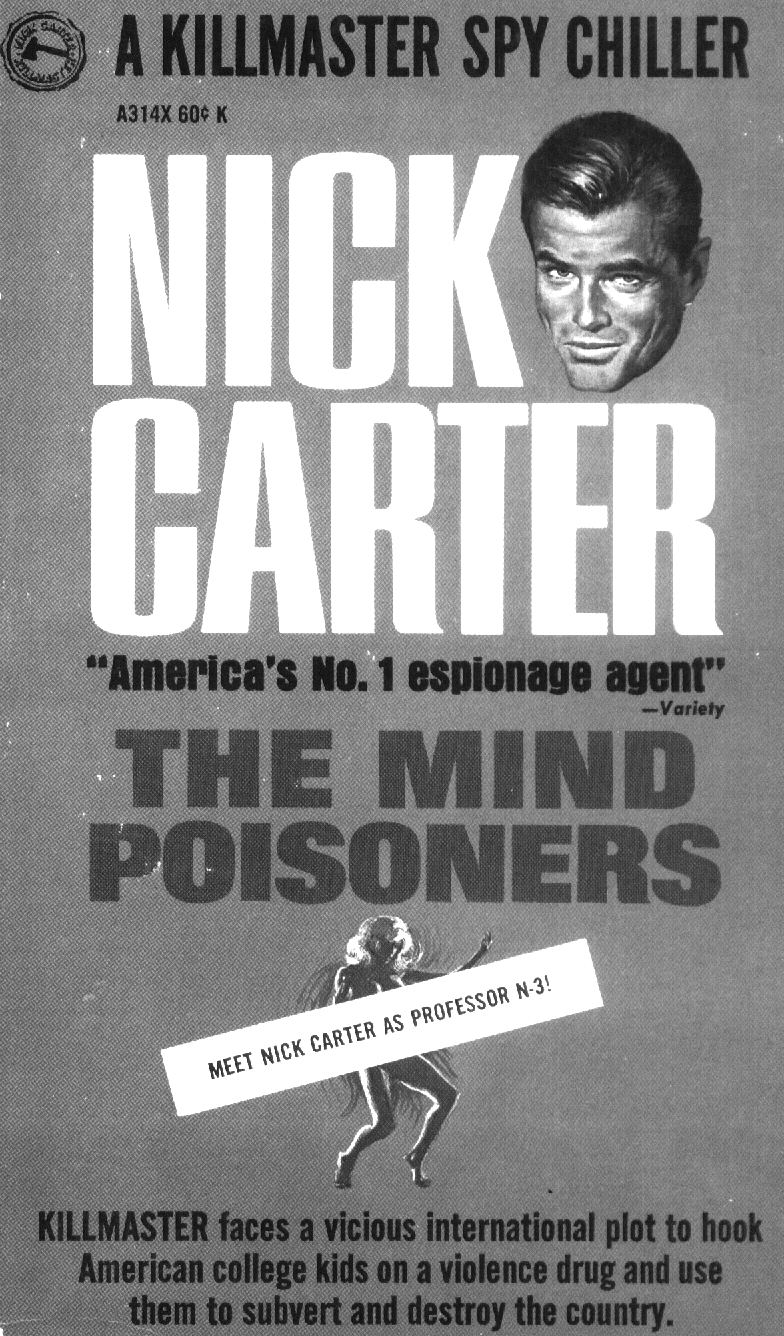The American James Bond
In the mid-60’s, Bond was big around the world, but in the States, there was still one problem: he was British. Wouldn’t it be better if he were a square-jawed, red-blooded, all-American kind of guy? Step forward the Conde Nast publishing group, who decided to resurrect Nick Carter, a name which had been a mainstay of pulp fiction since before the turn of the century. Back then, it was as a master of disguise that he made his name; now, he was needed to fight harder than 007 and use cooler gadgets, as well as shag more frequently.
He became Nicholas Carter, N3: top agent, holding a Killmaster rating, of the super-secretive AXE [a surprising nod to the super-secretive NSA, formed in 1952, whose mere charter remains classified even today]. His mission, should he choose to accept it – he inevitably did – was to fight for truth, justice and the American way, in a variety of exotic locations, while enjoying the company of a broad selection of large-breasted women.
To out-007 Ian Fleming, who did a scant dozen Bond books, Conde Nast employed an entire rota of authors (including some well-known names among crime writers), in order to satisfy the public’s lust for spy fiction. This roster approach means severe variation in style, ranging from first-person hard-boiled to third-person soft-focus, yet the audience didn’t seem to mind: as early as the end of 1976, the publishers were trumpeting “Over 20,000,000 Nick Carter books in print”, which is impressive if true. Admittedly, between 1964’s ‘Checkmate in Rio’, and ‘Tunnel For Traitors’ in 1986, Conde Nast published over two hundred and fifty in all, at a rate of roughly a dozen per year. This huge volume of output helps explain the sales figures, though it’s still highly respectable even on a per-novel average.
I stumbled across my first on holiday, an impressionable youth browsing a used bookshop in a North of Scotland coastal town. Since then, I’ve read the best part of a hundred; almost all, like the first, acquired second-hand – as with Shaun Hutson novels, it’s an unexplained mystery of the universe how they rarely seem to appear anywhere else. From Malaga to Vienna to Aberdeen, I’ve bought ‘em on sight: the vast majority unashamed pot-boilers, and just as unashamedly entertaining, literary candy-floss with no pretensions to gravitas, possessing lurid covers perhaps surpassed only by James Hadley Chase books. And while some were reprinted for years after their original appearance, others were more topical, such as N3 tracking down the man behind the bombing of the Beirut Marine compound.
Various attempts have been made to film Carter’s exploits, all the way back to ‘Nick Carter, le Roi des Détectives’ in 1908. At various times, Italians, Czechs and Americans (most notably with Walter Pidgeon playing ‘Nick Carter – Master Detective’) had a shot, but never quite realised the potential, despite the growing gap in the market as James Bond softened from the hard psycho-bastard of the early films. Certainly, most of the Carter oeuvre, especially in the 60’s, would have been too violent and way too sexy for a direct translation. However, as the years wore on, they ceased to be quite so extreme – or, rather, while the books remained steadfastly tough and ruthless, the mainstream caught up with and bypassed them.
In the end, this may have been their downfall: just as nudist camp films and H.G.Lewis’s splatter movies lost their audience when Hollywood woke up to the appeal of exploitation, so the factors which allowed Nick to shift titles by the tens of millions in his prime were slowly metabolized into popular culture. You want sex and violence, they’re now available from every bookshop, without the need to wrap them up as a spy thriller.
It may be hard to envisage a time when Variety could make the statement at the top of this page with a perfectly straight face, but Nick Carter has bounced back before from obscurity, and I wouldn’t bet against a 21st century re-incarnation. Till then, he may be gone, but in TC-Land, he is not forgotten.
The many faces of Nick Carter
 |  |
 |  |